In this post, we’ll be exploring the inner workings of a stone aggregate crushing plant, delving into the production process and the various kinds of machinery involved. Our focus will be on the Vrish Industries plant situated in Biwan, Haryana, India, where I have the honor of leading operations. This is an opportunity to gain a deeper understanding of the complexities of stone aggregate production.
Introduction
Stone aggregate, a versatile material used in everything from concrete and asphalt to railway ballast and construction fill, originates from large rock boulders that have been crushed by various types of stone crushers. These crushers break down the rock into a range of sizes, which are then sorted using vibrating screens.
The process of reducing the size of the stone boulders is typically carried out in multiple stages to achieve maximum cubicity. Cubicity is a measure of how much of the material can be considered cubic in shape. This characteristic is highly sought after as cubic particles contribute to better compaction, resistance to deformation, and workability.
In this post, we’ll delve into the fascinating process of stone aggregate production, shedding light on the complex mechanics behind it.
How does a stone aggregate crushing plant work anyway?
A crushing plant is a facility that transforms large rocks into smaller pieces for construction purposes. It consists of several stages, each with a specific function and equipment. The equipment has a reduction ratio, which measures how much the rock size is reduced after crushing. The optimal reduction ratio depends on the final product size and quality.
The stages of a crushing plant are:
Primary crushing: The biggest rocks are fed into a jaw crusher or a gyratory crusher, which can crush them to about 15 cm across.
Secondary crushing: The primary crushed rocks are further broken down by a cone crusher or an impact crusher, which can make them about 4 cm across. The machine used in this step is usually a cone crusher.
Tertiary crushing: The secondary crushed rocks are processed by a vertical shaft impactor, sand-making machine, or another cone crusher with different settings, which can create fine sand or gravel of about 1 cm or less across.
Segregation: The crushed rocks are sorted by size using a vibrating screen, which has different mesh sizes. The screen separates the rocks into different grades of stone aggregate, such as coarse, medium, or fine, that are fit for different uses.
Transportation: The stone aggregate is moved from one step to another using conveyor belts, which are strong and can carry heavy loads. Sometimes, the plant also needs to store the rocks in stockpiles, for example, if there are maintenance issues or weather conditions that affect the working of some machines.
Loading: The stone aggregate is loaded onto trucks using loading conveyor belts or wheeled loaders. The trucks then transport the material to the construction site or to a storage facility.
Plant at Vrish Industries
This illustration provides a step-by-step overview of a crushing plant:
Ramp: The starting point for the feed.
Grizzly Feeder: The feed is screened and regulated.
Jaw Crusher: The feed is crushed, reducing its size.
Vibrating Screen 1: The crushed material is segregated.
GSB out: The output at this stage is GSB (Granular Sub Base).
Twin Granulators: The feed is processed for further size reduction.
Stockpile: The material is stored temporarily.
Cone Crusher: The stockpiled material is crushed again.
Vibrating Screen 2: The crushed material is segregated for the final time.
Output 10-20 mm: The first output size category.
Output 2-10 mm: The second output size category.
Output 0-2 mm: The third output size category.
Loading Bay: The final destination for the different sizes of stone aggregate, ready for use in construction.
Crushing machines
Primary stage- Jaw crusher
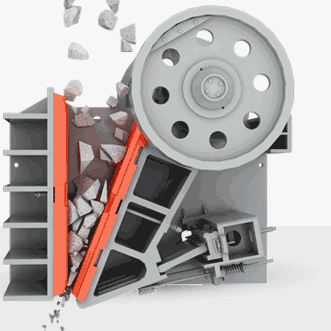
Jaw crushers are usually used as the primary crushing machine in stone aggregate production plants. They have 2 jaws, one which is fixed and one movable. The feed is crushed between the 2 jaws when the movable jaw moves back and forth. When the movable jaw retreats from the closed position, the crushed material is discharged and the output feed size is determined by the difference between the open side setting and the closed side setting of the jaw crusher.
Secondary stage: Twin Granulators
Granulators are devices that reduce the size of stone materials by compressing them between two rotating cylinders. They are similar to Jaw Crushers, but they have a smaller maximum feed size and a lower reduction ratio.
To optimize the performance of the granulators, we only feed them with stone materials that are larger than 60mm in diameter. The smaller materials are bypassed and sent directly to the final stage. This way, we avoid overloading the granulators with unnecessary feed and we maintain a consistent output size. This also improves the throughput of the plant, as we only process the materials that need further reduction.
Tertiary stage - Cone Crusher
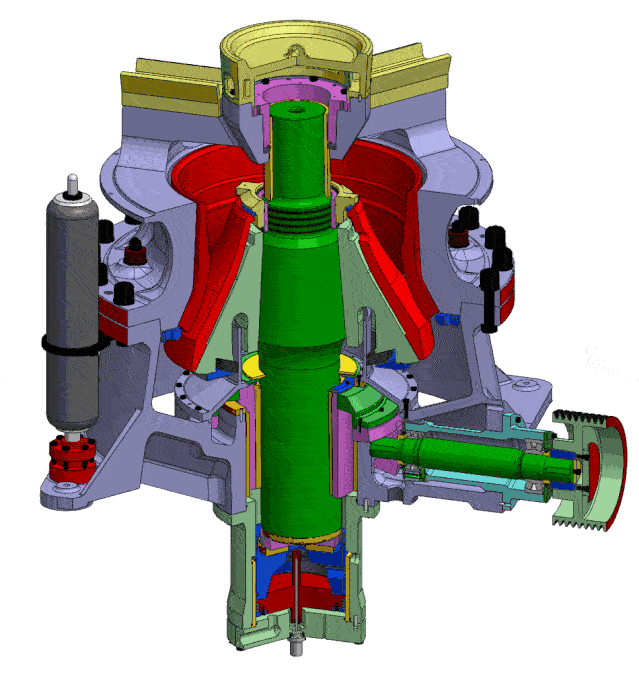
Our plant relies on the cone crusher as the final machine in the crushing sequence, which determines the shape, quality, and size of the stone aggregate. Some advanced plants use a Vertical Shaft Impactor as the tertiary stage, which produces higher-quality stone aggregate because it has a different crushing mechanism. However, these machines are also much more costly. We managed to achieve similar quality with just a cone crusher as the tertiary stage, thanks to our smart design. We will explain how we did it later.
The cone crusher receives material no larger than 80mm through the opening. The material drops and gets crushed between the mantle and the liner. These are the bright red parts of the machine in the illustration. A powerful electric motor drives the crown gear, which moves the eccentric bushing. The main shaft connects to the eccentric bushing and acts as a bearing. It also supports the gyratory movement of the main shaft and distributes the crushing force evenly across the crushing chamber.
We can adjust the CSS and OSS by changing the height of the cone mantle, which affects the distance between the cone mantle and the cone liner and thus the size of the output feed.
The illustration shows how the eccentric motion of the eccentric bush causes a gyratory motion of the main shaft and consequently the cone mantle. This squeezes the rock between the cone mantle and the cone liner.
Optimal Operating Conditions for a Cone Crusher
Operating a cone crusher at its optimal conditions is crucial for efficient functioning. Here are some key factors to consider:
Choke Feeding: The crusher should be fully covered with feed material. This prevents erratic power and pressure profiles, excessive wear, and high peak loads. A higher feed rate results in a smaller product size and higher throughput.
Rock-on-Rock Crushing: To achieve less flaky output, the crushing chamber should be filled with material. This promotes rock-on-rock crushing over rock and liner/mantel contact.
Oil Temperature: The oil temperature should be within the operating range, typically between 45-55 degrees. This can vary due to weather conditions.
CSS Setting: The CSS (Closed Side Setting) determines the output size. Material larger than 20 mm(in our case) is recirculated back inside the cone crusher. While recirculation results in more cubic material, it also increases power consumption. Therefore, an optimal CSS needs to be determined.
Wear and Tear: The wear rate of the grade 7 manganese cone mantel and cone liner varies with different rock types. As these parts wear, the CSS needs to be adjusted to compensate for the wear.
Power Consumption: Power consumption is a good indicator of the health of the cone crusher. Excessive power draw for the amount of material in the crushing chamber may indicate a fault in the internal parts of the crusher.
By keeping these factors in mind, one can ensure the efficient operation of a cone crusher. Remember, optimal conditions lead to optimal output!
Vibrating screens
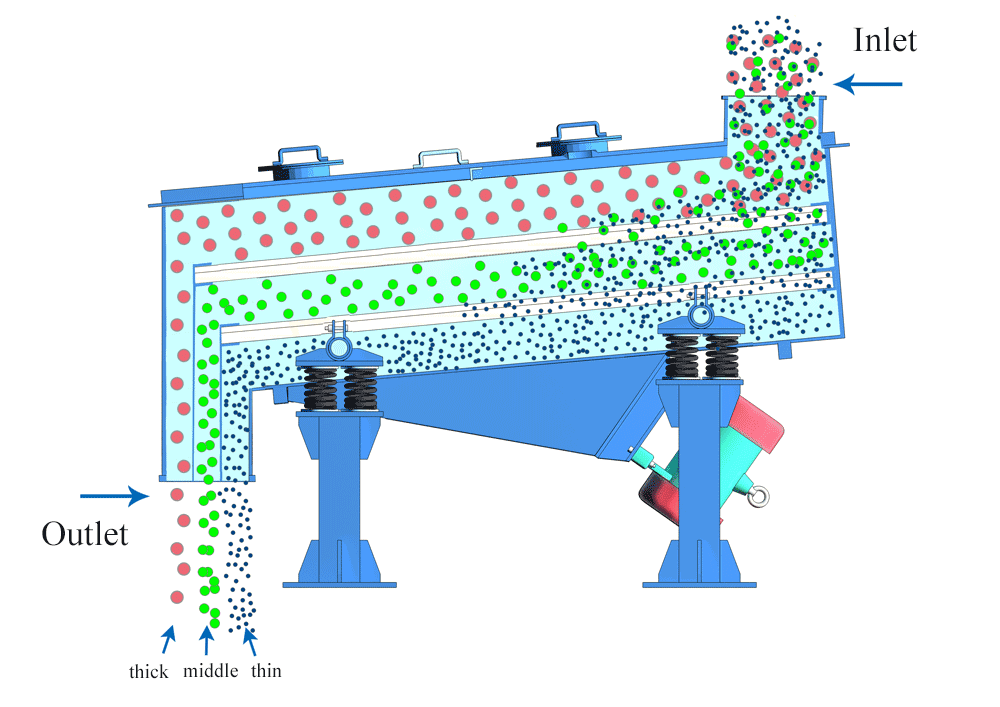
Screening is the process of separating a mixture of particles into two or more fractions based on their size. One of the most common methods of screening is using vibrating screens, which are devices that consist of a screen mesh or a sieve surface, a vibrator, and a vibration-damping device. The material to be screened is fed onto the screen, and the vibrating motion of the screen causes the material to separate into different sizes. The smaller particles fall through the openings in the screen mesh and are discharged, while the larger particles remain on the screen and are discharged from the edge of the screen.
The size of the openings in the screen mesh is carefully selected according to the desired size of the products.
For example, if we want to produce aggregate sizes of 20-10 mm, 10-2 mm, and 2-0 mm, we need to use screen meshes with openings of 10 mm, 2 mm, and 0 mm, respectively. Anything above the size of 20 mm is recirculated back to the crusher for further crushing. The screen mesh with openings of 10 mm will receive the material that is below 20 mm, and will separate it into two fractions: 20-10 mm and below 10 mm. The fraction below 10 mm will pass through the screen mesh and will be discharged, while the fraction between 20-10 mm will remain on the screen and will be discharged from the edge of the screen. A similar process will segregate the 10-2 mm aggregate using the screen mesh with openings of 2 mm.
In our case, we have two locations where we use vibrating screens, as shown in the figure. They are located at 4 and 9. The first screen is used to feed the twin granulators the correct feed size, so this screen has only two outputs: above 60 mm and below 60 mm. The material that is already below 60 mm does not need to be crushed in the secondary stage, so we pass it straight to the stockpile. The material above 60 mm is crushed again by the twin granulators with the closed side setting (CSS) set so that the output size is 60 mm.
Feeders
The feed into the jaw and the cone crusher needs to be regulated in a way so that the optimum amount of material is crushed at any given point during production. Below we describe the different types of feeders used in the plant.
Grizzly feeder
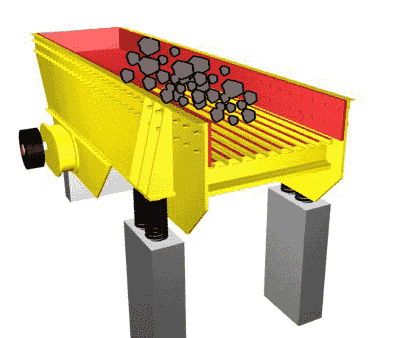
The grizzly feeder has two objectives:
To regulate the feed of large boulders into the jaw crusher
To segregate boulders and GSB(granular sub-base), and send the GSB to the appropriate output conveyor
The working principle is similar to a screen but without the multi-layer mesh design. For the segregation of GSB, ‘teeth’ with wide openings are present at the end of the feeder.
Vibro feeder
The vibro-feeder takes the material from the stockpile and feeds it to a conveyor going into the cone crusher. The working principle is similar to vibrating screens grizzly feeders but they don’t segregate at material.
Both of these feeders make use of a variable frequency drive to regulate the amount of material fed into the crushers.
Conveyors
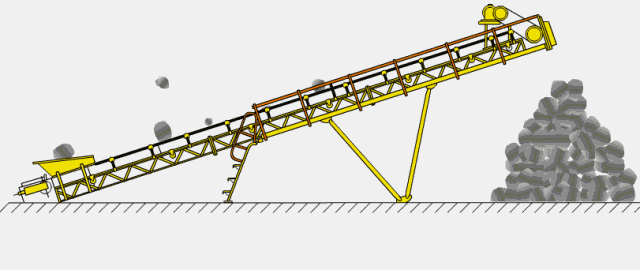
Heavy-duty conveyor belts are used to transport material from one machine to the other. They have different size and motor ratings depending on the amount and type of feed that is being transported on the conveyor.
Conclusion
In this post, we introduced stone aggregate crushing plants, how they work, what are the different machines used, and the different design considerations. We had a look at the Vrish Industries plant at Biwan, Haryana as an example to understand these concepts.



コメント